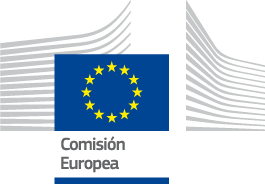

FLAG Factsheet
Lapland is the northernmost part of the EU. During long winters (usually six months) the lakes are covered with a 60-80 cm thick layer of ice. Short summers are busy with nights illuminated by the midnight sun.
The population density is very low, and the number of inhabitants is declining in most areas. The unemployment rates are high, between 13-18%. Tourism is flourishing, however, providing a growing market for local products.
Around 10% of the population is employed in primary production (forestry, farming, reindeer husbandry, fisheries) and there is significant potential to develop fisheries due to the abundance of fish stocks in the area’s lakes, a good demand for fish, and excellent water quality. The challenge is recruiting young people into the fisheries sector.
In the FLAG, there are 100 registered fishermen of whom 40 are full-time professionals, three fish processing companies, and three aquaculture companies. The demand for high quality freshwater fish is very good but the main challenge for fishermen is to increase the volume produced and to provide a reliable delivery system.
River Tornionjoki, running in the western part of the area and forming the border between Finland and Sweden, is protected by the Natura2000 directive. There are also some spatial and temporal fishing restrictions to protect migrating salmonid species all over the area. Some of the large national parks and nature reserves are protected wilderness areas.
The main objectives of the strategy are to improve the profitability and viability of the fisheries sector and to maximise the sustainable exploitation of fisheries resources. With an ageing workforce, the average age of fishermen being ca. 55 years in some areas, it is essential to attract young people into fisheries in order to secure the future of the sector.
More specifically, the strategy will aim to:
Increase the professional skills of fishermen (e.g. in fish processing and in business economics).
National €465 500 and municipal €108 000
Planned private funding €539 000.
Projects can be presented and selected on an ongoing basis.
The fishermen in Lapland have developed efficient and cost-effective fishing techniques, both for the winter and the open water season.
The fish caught in Lapland is well-known for its high quality, as the fishermen handle the fish properly along the whole chain, from lake to market.
There are also some well-functioning fishermen’s cooperatives.
Fishermen in this area would be interested in learning how tourism can be combined with fisheries in the most profitable way.
Type of cooperation projects foreseen: Transnational, to share our expertise in fishing techniques and fish processing with other inland FLAGs.
The FLAG territory overlaps with two LAG territories.
The FLAG shares its legal structure and shares one board member with the Leader LAG Northernmost Lapland.
The FLAG and LAGs have separate local development strategies.
The FLAG coordinates its work informally with the Leader LAGs by having frequent discussions with the LAG personnel and the FLAG manager participates in the board meetings of the LAGs when necessary. It also has formal cooperation with the Leader LAG Northernmost Lapland, as the FLAG manager is employed by the LAG and the LAG provides the FLAG with administrative assistance.